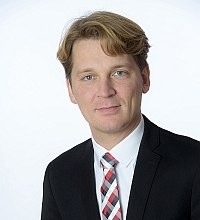- Industries
- Factory of the Future
- Products
- Company
- Career
- Contact
Efficient Production from the Roll to the Stringer
Published on 05 March 2024
Broetje-Automation and Spirit AeroSystems, Inc. Complete Continuous Composite Preforming Technology Project
For several years, Broetje-Automation has been working with Spirit AeroSystems to further automate the preforming of large composite structural parts for aircraft in a stable, continuous process. Reproducible high quality of long and complex profiles, such as stringers for future aircraft, can be achieved very quickly and cost-effectively. Lay-up rates of 100 kg/h are just the beginning.
The preforming of large structural parts made of carbon fiber-reinforced plastics (CFRP/composites) in aircraft manufacturing is often still a manual process: at best semi-automated, thus very time-consuming and cost-intensive. In some cases, individual layers are prepared on cutting tables, cleared onto separate tables, then superimposed in negative forms and thermally fixed to stabilize the preform prior to consumption. The equipment and storage areas for these processes take up significant workshop space, consume extensive labour resources, and typically achieve far lower production rates compared to integrated automated solutions.
Multiple Process Steps in one machine – Integrated and Automated
Reducing manual effort and workshop space requirements, and significantly increasing output was the goal of a joint project between Broetje-Automation GmbH, a leading specialist in automated systems and assembly for aerospace applications based in Rastede, Northern Germany, and Spirit, a world leader in aerostructures. The multi-year project has now been completed at Spirit’s Aerospace Innovation Center (AIC) in Prestwick, Scotland.
The resulting Continuous Composite Preforming System (CCPS) integrates all work steps into a continuous, fully automated process: from unrolling and depositing the material to longitudinal, transverse and contour cutting of the individual layers to fixing, forming, trimming and longitudinal bending into various reinforcing parts (stringer sets) for aircraft wings. The demanding production process requires precisely coordinated and controlled material, tool and process control, and thus powerful automation technology. For this extremely complex automation task, Broetje-Automation worked closely with its long-term partner SIEMENS and benefited from the German automation giant’s expertise in handling the extensive hardware and software portfolio. In addition to performance and scalability, SIEMENS’ high acceptance in the global aerospace industry as well as its rapid response times are added benefits of this collaboration with Spirit.
Efficiency and Precision from the Roll to the Composite Structural Part
The system is fed with dry composite material from multiple coils via specially designed “drop units” for depositing, trimming and transporting the layers. A main drive and an auxiliary drive at the end of the line always pull/push at least one base and top layer through the process. In between, the layers are stacked, each with its own length, width and contour. For this purpose, the CCPS is equipped with a variety of cutting mechanisms, some of which are movable. To ensure a uniform transport speed of all layers, the conveyor drives of the drop units are electronically synchronized with the main drive and can thus be controlled over the entire length.
The actual build-up of layers is done in several successive steps using different forming techniques, including heating and cooling processes. Depending on the desired part contour, fillers are also introduced, edges are trimmed, and the entire part is deformed close to the final contour to achieve the desired part geometry in a continuous process.
End-to-End Automation from a Single Source
All components and Spirit’s Patent pending technology, including more than 100 servo drives, must be controlled precisely and seamlessly. Complex individual steps are coordinated by two CPUs in a fail-safe version supplied by Siemens. The line is operated and visualized via a Simatic Industrial Flat Panel and Simatic WinCC Advanced. The integration of the heating control system has enabled precise temperature control that is gentle on the sensitive material.
Application Field Expandable – Output Capable of Increasing
The Continuous Composite Preforming System is significantly more productive than any manual or semi-automated preforming process, although the optimization of the overall system is just beginning. This development has demonstrated the ability to achieve much higher speeds in the next evolutionary steps towards applications in future aircraft programs. Broetje-Automation and Spirit have achieved a groundbreaking breakthrough by integrating an entire factory into an automated system with a fraction of the floor space and energy consumption. This also contributes to a more sustainable production system for future generations of aircraft.





